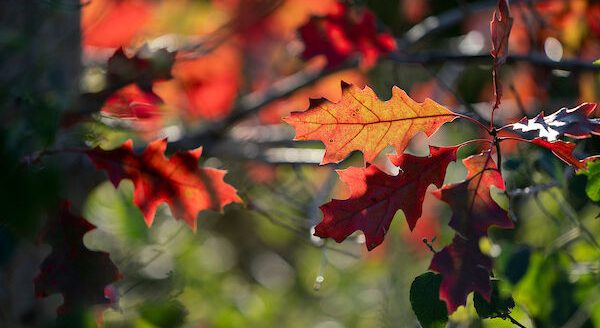Win the war on weeds: Turn them into ‘tea’
You’ll think I’m crazy when I say this. I can’t wait to get outside to pull weeds.
No, I haven’t had a full-blown heat stroke. I’ve just recently discovered that weeds can be used to make fertilizer tea.
Before this discovery, I was downright depressed. The weeds were winning.
Once the June rains subsided, these crafty little encroachers totally took over, laying claim to much of my garden. Before that, weeding seemed more manageable: A spring morning, a few plucks and the weeds are gone. No wonder “National Weed Your Garden Day” is on June 13—when it’s still not such a daunting task. When it’s not yet summer.
Once summer strikes and temperatures soar, these pesky invaders seem to mock my every effort and multiply before my very eyes—just as my misery quotient is rising; my interest waning.
Some like nutsedge are bold and upright, others like spurge and chickweed lie flat against the soil or crouch in cement crevices or root deep beneath the mulch. Many seem to prefer disguising themselves among their look-alike annuals and perennials—that bold nutsedge spiking near the ornamental grasses; purslane and wood sorrel creeping in the moneywort; lambsquarter amongst the strawberries and primrose; dandelions and crabgrass cropping up anywhere they want.
Try as I might, I can’t seem to get them under control. They never fail to pop right back up, no matter how deep I dig or how hard I pull. My garden friends remind me, “Weeds are just wild plants in the wrong place.” That is no solace.
I might win a battle here and there, eliminating weeds from one spot or another, for one day or two, but they are audacious opportunists and I am left drained and discouraged and near surrender.
But not anymore. I have a new zeal about weeding, even in the hottest throes of summer. Thanks to a recent article in the Farmer’s Almanac, my attitude has made a major shift. Now I see weeds as my friends.
Because they accumulate vital nutrients from the subsoil and bring the nutrients into their leaves, those green annoyances can be brewed up to make fertilizer for the plants I love.
For years I’ve used willow tea to help get my new plants off to a good start, having heard that willow leaves are rich in root growth hormones. I’ve tried my hand at compost tea as well, but why waste good compost?
Weed tea is just as easy, and it’s free. There is also a feeling of satisfaction, knowing I may actually be a step closer to winning my war on weeds.
Simply throw those weeds (roots and all) in a bucket or trash can. Pack them down until the container is half to two-thirds full.
Fill with water (rain water preferred). Cover loosely and leave for 2 to 4 weeks. Stir every week or so.
A word of caution—the fermentation process is smelly. The result is a sickly brown green slurry that you will need to strain. (You can cut out the straining step by piling the weeds in a permeable sack and putting the sack in the water.)
Before using, dilute the fertilizer tea at a rate of 1 part weed tea to 10 parts water. Pour on the soil at the base of your plants, or you may spray on the leaves once diluted further to the color of weak tea. Apply no more than every two weeks or when your plants need a boost.
Some of the very best weeds for this are common chickweed, dandelions, white clover, lambsquarter and purslane, but any weed will do. When I learned that one lambsquarter plant can set over 75,000 seeds, one purslane plant more than 2 million, it makes my victory even sweeter. What satisfaction knowing those weeds will be returning to the earth in a nourishing way, not to reappear in their former exasperating camouflage state.
I just wish I had more buckets. But if you have too many weeds for brewing, remember you can harvest many of them to eat or use medicinally. But that is another use for another year, another article for another day.

